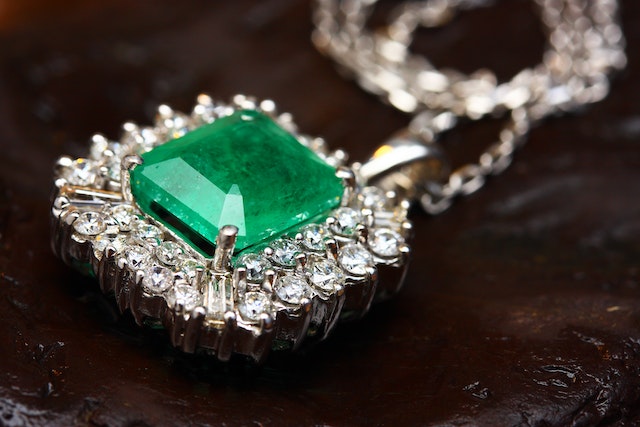
Why are rubies red, emeralds green, and sapphires blue? Rubies and sapphires are varieties of the mineral corundum. Emeralds are a variety of the mineral beryl. They all have impurities that give them their color.
Rubies are obviously red. Their name comes from the Latin ruber, which means red. They come in many different shades and the most valuable are the brightest, called pigeon blood. Rubies are made of the mineral corundum. Corundum is made when oxygen and aluminium atoms are compressed under high pressure, but it is a colorless mineral. In a ruby, a tiny amount of the aluminium is replaced with chromium, which is red. The chromium content usually ranges between 0.1 and 4%. The more chromium the mineral has, the deeper the red color it has.
Rubies are much rarer than diamonds because they don’t appear all over the world whereas diamonds do. In fact, diamonds are so common that the diamond industry has to control the available stock to keep the price high. The rarest rubies have evenly distributed color, high clarity, and rich saturation. Most rubies found don’t meet these standards, so they are treated to make them clearer. One way to do this is to heat the ruby to about 1800˚C. Rubies have thin intersecting veins inside them that are called silk. At high temperatures, the silk breaks down and the ruby becomes clearer. Another method is to inject lead glass into the ruby to cover up impurities inside it. The rarest, most valuable rubies are naturally clear.
Sapphires are also made of corundum. Unlike rubies that contain chromium, sapphires usually contain titanium and iron. The amount of titanium and iron will change the depth of the blue in the stone. If corundum contains only titanium, it will be colorless. If it contains only iron, it will be pale yellow. If it contains both, it will be blue. The word sapphire comes from the Latin sapphirus, which means blue. Despite having a name that means blue, sapphires actually come in many different colors, from pink to yellow. Sapphires can be found in many different countries, but Sri Lanka is the world’s largest producer. Similar to rubies, sapphires are very rare and good quality, untreated sapphires are extremely rare. However, there are many ways of treating them so that they appear clearer and of better quality than they naturally are. Untreated gemstones will always come with a certificate showing their authenticity.
Sapphires and rubies are both extremely hard materials. There is a scale called the Mohs hardness scale and diamond is at the top of it with 10. Corundum, the mineral that rubies and sapphires are made out of comes in at 9.
Emeralds are made of a different mineral to rubies and sapphires. They are made of beryl, and they are formed when magma or hydrothermal fluids inside the Earth begin to cool. If the magma or fluid happens to contain enough of the right minerals, emeralds can form. Similar to corundum, pure beryl is clear. It is the impurities in it that give emeralds their green color. In this case, it is usually chromium or vanadium. The word emerald comes from the Greek smaragdos, which meant green gem. Emeralds are also much rarer than diamonds, but they are nowhere near as hard. They score 7.5 on the Mohs hardness scale.
Interestingly, chromium is the impurity that makes rubies red and emeralds green. How can one impurity make two minerals different colors? It happens because of the structure of the crystals. The structure of the atoms within the corundum that makes rubies is trigonal and the structure of the beryl that makes emeralds is hexagonal. This slight difference causes the chromium to absorb different amounts of energy. In the emerald, the chromium is weaker and absorbs less energy, giving the green color.
Rubies, sapphires, and emeralds are all rare, but the rarest gemstone is painite. It is named after Arthur C Pain, the man who discovered it in the 1950s. It has an orange-red color which is caused by (surprise surprise) chromium. It is made from the mineral borate and so far, only two of these crystals have been turned into faceted gemstones.
So, why are rubies red, sapphires blue, and emeralds green? It is because of impurities inside their crystalline structure that absorb different amounts of energy. Chromium And this is what I learned today.
Sources
https://en.wikipedia.org/wiki/Ruby
https://www.philophrosyne.com/blogs/jewelry-guide/difference-between-ruby-and-diamond
https://thenaturalrubycompany.com/education/rarity-of-rubies-versus-diamonds/
https://www.thenaturalsapphirecompany.com/t-education_sapphires/
https://www.webexhibits.org/causesofcolor/8.html
https://en.wikipedia.org/wiki/Emerald
https://sciencing.com/how-emeralds-formed-5001485.html
https://www.gia.edu/seeing-green
